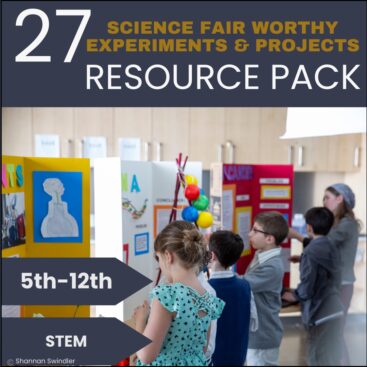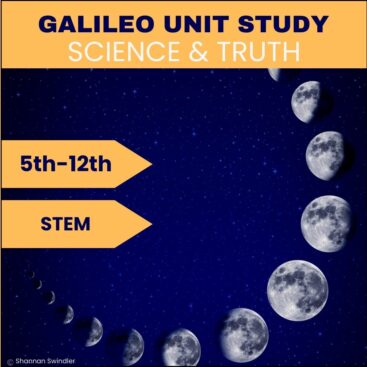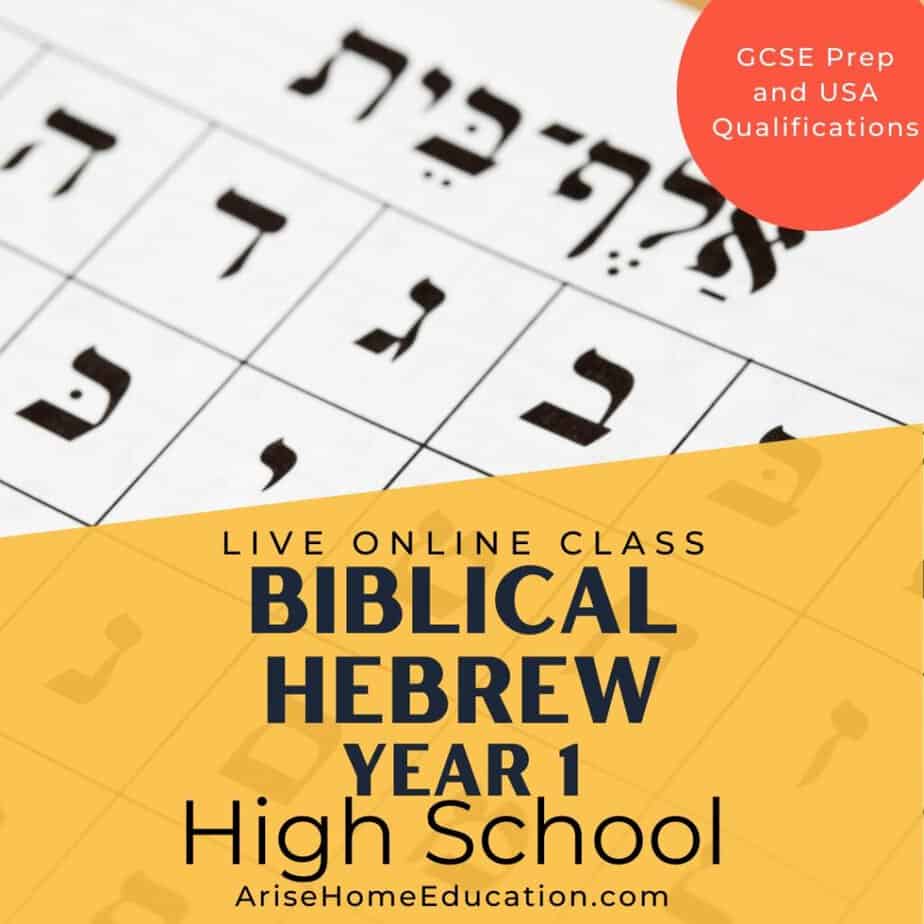
Table of Contents
High School Astronomy Curriculum from a Christian Perspective
Like so many things, let’s start at the very beginning… it’s a very good place to start. Right! When using a high school astronomy curriculum from a Christian perspective, it is important to incorporate biblical references when discussing the creation of the universe.
By exploring passages such as Genesis 1:1, students can gain a deeper understanding of the relationship between science and faith. Use the study of astronomy to emphasize the awe and wonder of God’s creation, as it is a powerful way to inspire students to marvel at the greatness of the vast universe as part of God’s creation.
It is also important to discuss the compatibility of science and faith when teaching about the origins of the universe. By encouraging students to explore the connections between astronomy and the Christian faith, you can help them see that science and faith are not mutually exclusive. Instead, they can complement each other and provide a more holistic understanding of the earth sciences and the world around us.
Additionally, use the study of the stars and planets to inspire students to marvel at the greatness of God’s creation. By delving into the intricate details of the cosmos, students can gain a deeper appreciation for the majesty and complexity of the universe. This can lead to a sense of wonder and awe that can strengthen their faith and deepen their understanding of the Creator.
Exploring the Universe through a Biblical Worldview
Have you ever looked at the wonders of the night sky and thought about the mysteries of the universe and how they align with your faith? Exploring the wonders of the universe with a faith-based perspective can be an enriching experience. By connecting scientific knowledge with biblical teachings, you can gain a deeper understanding of the beauty and complexity of creation. Encouraging homeschooled students to explore the cosmos through the lens of their faith can provide a unique and enriching educational experience in their high school years.
Through the study of astronomy, you can discover the beauty and intricacy of the universe while also cultivating a sense of wonder and awe within a biblical framework. By delving into the scientific principles of the cosmos and aligning them with the teachings of the Bible, students can gain a holistic perspective on the wonders of the universe. This approach not only allows you to appreciate the magnificence of creation but also strengthens a student’s faith by recognizing the divine hand behind it all.
By integrating a biblical worldview into the exploration of the universe, you can develop a deeper appreciation for the harmony between planetary science and faith. This approach encourages you to seek truth and understanding in both the natural world and spiritual teachings, ultimately leading to a more comprehensive and fulfilling educational experience. By exploring black holes, neutron stars, and white dwarfs ( a kind of star) through the lens of your faith, you can uncover profound insights into the interconnectedness of the universe and your place within it.
Need help choosing Online courses for your Teen?
Read This 👉 Online Christian Home Education: Parents’ Guide
The Importance of Hands-On Learning Activities in Faith-Based Astronomy Education
Hands-on learning activities help students engage with and understand complex astronomical concepts. By actively participating in activities such as building models of the solar system or using telescopes to observe celestial objects, you can gain a deeper understanding of the universe and how it reflects the greatness of God’s creation. Using a Stargazer’s Guide to study the Milky Way is perfect lab assignment for middle school and high school students needing lab work to gain full credit hours for science on their transcript. Self-paced courses allow students to follow the lesson plans set out and complete an independent study of Astronomy during their high school years.
Combining a physical science class with a bible study about heavenly bodies creates an interactive experience that can strengthen your homeschooler’s faith and appreciation for the beauty of creation. When you actively engage with the night sky through hands-on activities, you can develop a sense of wonder and awe at the vastness and complexity of the universe. U
Understanding star formation, the lunar phases, and the Galilean moons of Jupiter provides an unparalleled opportunity to learn about the majestic beauty of God and His universe. This sense of wonder can deepen your student’s spiritual connection and inspire you to contemplate the mysteries of creation and the role of faith within it. Exploring the night sky through hands-on activities can inspire a sense of wonder and awe. As high schoolers interact with the wonders of the universe, they can strengthen their faith and develop a greater appreciation for the beauty and complexity of God’s creation.
Hands-On Astronomy Activities
Incorporating hands-on activities into the curriculum can make learning about astronomy more fun and memorable for students of faith. Instead of simply reading about astronomical phenomena, you can actively participate in experiments and observations that bring astronomy and its related fields or concepts to life. This active engagement can make the learning process more enjoyable and help teens retain the information more effectively. By incorporating hands-on activities into your faith-based astronomy education, students can have a more engaging and memorable learning experience that deepens your understanding of the universe and its connection to your faith.
Incorporating the Wonder of God’s Creation into High School Astronomy Lessons
Incorporating the wonder of God’s creation into high school astronomy lessons is an important aspect of teaching students about the universe. There is a small selection of courses that teach this well at the high school level. By encouraging students to marvel at the beauty and complexity of the universe, they can develop a sense of awe and appreciation for the natural world around them. Exploring the faith-based perspective on the origins of the cosmos can help students understand how different belief systems approach the question of how the universe came into being. This can lead to meaningful discussions as they experience astronomy and the connections between science and spirituality. Students learn how these two perspectives can complement each other in the study of astronomy.
Introducing students to the concept of stewardship of the Earth and its resources can help them understand the importance of taking care of the planet and all of its inhabitants. By emphasizing the harmony between faith and scientific exploration in a high school astronomy course, students can develop a holistic understanding of the universe and their place in it. By integrating these elements into high school astronomy resources, students can gain a deeper appreciation for the wonder of God’s creation and the interconnectedness of faith and scientific exploration. This approach can inspire students to become more curious and engaged learners and to develop a sense of responsibility for the world in which they live.
Engaging High School Students in Faith-Based Astronomy Curriculum
In this faith-based astronomy curriculum, our goal is to introduce your high schoolers to the wonders of the universe through a faith-based lens. We want to encourage you to explore the connections between a fascinating science course and spirituality, and to see how the two can work together to deepen your understanding of the cosmos.
To bring astronomy to life for your homeschooler, look for and hands-on activities that will engage their senses and spark their curiosity. Whether it’s stargazing, building models of celestial bodies, or conducting experiments, let’s foster a sense of awe and wonder in the cosmos while also deepening your faith.
Throughout the curriculum, opportunities are provided for students to reflect on the beauty and complexity of the universe from a faith-based perspective. We believe that by exploring the mysteries of the universe through the lens of faith, you can gain a deeper appreciation for the wonders of creation and strengthen your spiritual connection to the world around you. So get ready to embark on a journey of discovery that will not only expand your scientific knowledge but also enrich your faith!
High School Astronomy Curriculum: Faith-Based Guide
Here are 10 things to look for in a Christian astronomy curriculum for high school
It can be difficult to know what to look for in a high school astronomy curriculum. As you review the various Astronomy curricula for high school, keep these points in mind. One good option is to try sample lessons or get a video taster lesson for self-paced astronomy classes. This allows your student to see the Astronomy curriculum guide and if it meets your expectations as a family. Review any educational website for a statement of faith to ensure it aligns with your family’s beliefs.
Faith-based perspective:
The curriculum should incorporate a biblical worldview, emphasizing the majesty and creativity of God as seen through the study of astronomy. It should demonstrate how scientific discoveries align with Christian beliefs about the universe and its origins.
Integration of biblical concepts:
The curriculum should connect astronomy topics to biblical passages, showing how the study of the cosmos can deepen one’s understanding of God’s nature and purposes. It should help students see the harmony between scientific knowledge and faith.
Emphasis on the wonders of creation:
The curriculum should highlight the beauty and complexity of the universe, emphasizing God’s creative power and love. It should inspire students to appreciate the awe-inspiring wonders of the cosmos and the role they play in God’s grand plan.
Clarity and accuracy of scientific information:
The curriculum should present scientific concepts accurately and in a way that is accessible to high school students. It should avoid oversimplification or misrepresentation of scientific theories.
Focus on the big picture:
The curriculum should help students grasp the big picture of astronomy, from the formation of the universe to the development of life on Earth. It should provide a comprehensive understanding of the cosmos and its place in God’s creation.
Personal application:
The curriculum should encourage students to apply their knowledge of astronomy to their personal lives, fostering a sense of wonder, gratitude, and awe for God’s creation. It should inspire students to live in a way that reflects God’s love for the universe and all its inhabitants.
Balance between faith and reason:
The curriculum should strike a balance between faith and reason, acknowledging the limits of human understanding while also celebrating the power of scientific inquiry. It should promote intellectual honesty and the pursuit of truth in all fields of study.
Hands-on learning activities:
The curriculum should incorporate hands-on learning activities to engage students and deepen their understanding of astronomy concepts. This could include simulations, experiments, field trips, and projects.
Integration with other subjects:
The curriculum should seek opportunities to integrate astronomy topics with other subjects, such as mathematics, physics, chemistry, and history. This can help students see the connections between different disciplines and appreciate the interconnectedness of knowledge.
Spiritual growth:
The curriculum should encourage spiritual growth in students, fostering a deeper connection with God and a sense of awe and wonder for the universe. It should promote character development and the practice of Christian values.
Whether you are teaching high school students or younger students with a keen aptitude for astronomy, students interested in professional careers or university degree programs related to astronomy will want a solid understanding, including research experiences and lab projects, to show on their high school transcript.
In some cases, the junior high homeschool student may be ready for a high school-level astronomy course even if their math skills are not at a high level yet. Problem-solving skills and creative projects that allow them to learn without complicated math are doable with only a few high school-level courses. There may be the need for additional coursework or projects to ensure that enough hours are accumulated for high school credit, but it is a fun way to learn to tick the box for required courses in high school.
More Courses to Support a Christian/Biblical Worldview
More Science Information And Resources
- Faith-Based Science Curriculum: Astronomy for Teens
- Astronomy Curriculum: High School
- What To Look For in a High School Astronomy Curriculum
- Faith-Based Science Curriculum: Online Biology for Teens
- Online Christian Home Education: A Parent’s Guide
- Science Activities for Teens: 12 Summer Vacation Ideas
- Christmas STEM Activities for Teens






